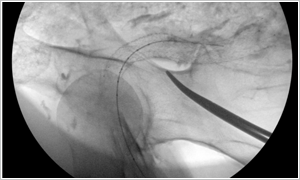Acceptance Criteria & Boundary Condition Development
Boundary testing & design inputs

Design inputs are an important part of medical device development. The inputs define all of the criteria and requirements of your medical device. Examples of questions that will translate to design inputs are: How is the movement of the superficial femoral artery (SFA) defined during walking? How is successful resistance to corrosion defined for my medical implant?
The human body offers many challenges to overcome during the design and development of a new medical device. The clinical environment is complex and highly variable. Defining robust clinically relevant acceptance criteria and boundary conditions can be a significant hurdle in the medical device development process.
Creating rationale and justifications to ensure a device is safe is an important and exciting part of the development process. Have you ever wondered how much a 20-year-old female aorta pulses verses an 80-year-old male aorta? Maybe you have wondered how the tibial arteries move during sitting versus standing versus active motion. Boundary conditions for these scenarios are important in device design and take concerted efforts to develop. We rely on our experience in developing the acceptance criteria and clinical conditions for hundreds of devices over a wide range of clinical environments. Being part of a large medical device company has given us the privilege of validating prospectively designed criteria with back end clinical study results. The insights gained during this experience are priceless and worthwhile to understand and use repeatedly. Our efforts have helped produce medical devices that successfully stand up to their intended use and the requirements for regulatory approval.
Additionally, once you have a justification for a clinically relevant model, you need to create one that adequately represents that anatomy for testing and anticipates future design iterations. Depending on the type of test you are trying to execute, the model itself may need further consideration. Pulsatility, rigidity, particulate shedding are a few of the considerations, and working through a robust model for device evaluation is an important part of medical device design and development.
Key Activities
Medical Device Design and Development, Design Inputs, Acceptance Criteria and Boundary Condition Development, Physiologic Models
OUR COMMITMENT
We are committed to consistently performing services with high quality, that deliver exceptional results, and add value to the client’s business.
For client surveys sent in 2024, we received ratings of 4.98/5 points (13).
